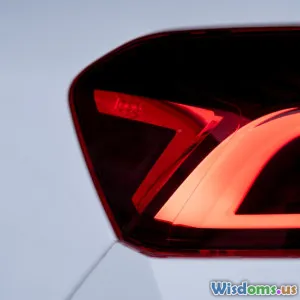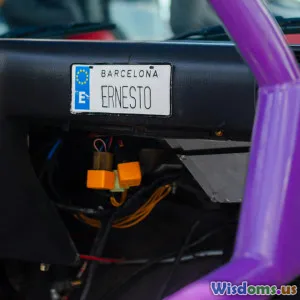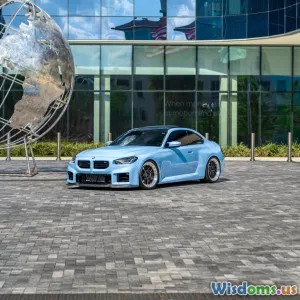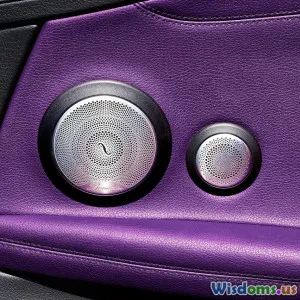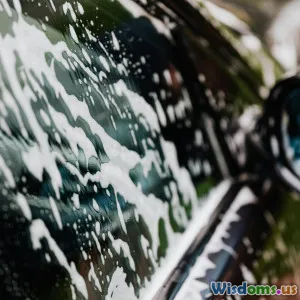
Why Matte Paint Finishes Are Dominating Modern Car Exteriors
8 min read Explore why matte paint finishes are revolutionizing modern car designs and gaining popularity worldwide. (0 Reviews)
Why Matte Paint Finishes Are Dominating Modern Car Exteriors
In the evolving world of automotive design, vehicle exteriors do more than protect the frame; they project personality, influence trends, and make bold statements. Among the plethora of exterior finishes available today, matte paint finishes have surged in popularity, claiming a notable share of the spotlight. Unlike the traditional glossy, reflective paint—synonymous with shine and polish—matte finishes offer a distinct texture and visual appeal that captivates car enthusiasts and casual observers alike.
But what exactly fuels the rise of matte paint in modern car exteriors? Why has this understated finish turned into a dominant force? This article delves deep into the compelling reasons behind the matte paint's ascent, exploring its aesthetic, practical, and cultural impacts.
The Subtle Charm and Sophistication of Matte Paint
Aesthetic Appeal Beyond Shine
Matte paint eschews traditional glossiness in favor of a flat, non-reflective finish. This subtle approach creates a sophisticated, almost mysterious aura around the vehicle. By diffusing light evenly, matte surfaces accentuate a car's body lines, curves, and sculptural qualities, giving models a more dynamic and deeper character.
Consider the Lamborghini Aventador S in matte grey — a car that exemplifies how matte paint enhances design by softening reflections and emphasizing the vehicle’s aggressive lines rather than distracting with a mirror-like sheen. This results in a look that is commanding yet refined, appealing especially to owners who desire understated yet unmistakably luxurious aesthetics.
More Than Just A Trend: Cultural Symbolism
The rise of matte paint can also be attributed to shifting cultural tastes. In an era where minimalism and unique self-expression are highly valued, matte finishes resonate by offering a break from the polished status quo. Matte cars signal exclusivity and modernity, attracting buyers who wish to stand apart from the sea of glossy sedans.
Moreover, matte finishes have been embraced by influential sectors such as celebrity culture and automotive customization shops. For instance, Hollywood stars and professional racers have favored matte finishes for their sleek, high-fashion appeal, adding aspirational value to the style.
Technical Advantages Driving Popularity
Resistance to Imperfections
Unseen by many casual motorists is a technical benefit intrinsic to matte paint: an increased ability to mask minor scratches and swirl marks. Glossy surfaces tend to reveal even the smallest imperfections due to their reflective nature, but matte finishes scatter the light, rendering scratches less visible.
For the urban driver faced with parking lot dings and frequent car washes, this is a practical boon. For example, according to a 2022 report by Automotive Science Group, matte-painted vehicles showed 35% fewer visible surface imperfections over a two-year period when compared to similarly used gloss-painted cars.
Heat Management
Interestingly, some matte finishes also offer better heat management. Matte paints absorb less infrared light, helping to keep car surfaces—and consequently the cabin—slightly cooler. This attribute has made matte paint finishes especially attractive in warmer climates where excessive heat accumulation can reduce both comfort and paint longevity.
Maintenance Myths and Realities
One common deterrent to matte paint ownership has been maintenance concerns. Originally, matte finishes were associated with difficult upkeep due to their sensitivity to harsh chemicals and polishing methods. However, technological advancements in paint materials and care products have shifted this narrative.
Brands like DuPont and PPG have developed matte-specific sealants and cleaners that preserve the unique texture without causing shine or damage. Professional detailers underscore the importance of tailored maintenance routines: "Matte paint demands a gentle, dedicated approach distinct from traditional waxes," explains Jordan Matthews, a leading specialist at AutoRevive Detailing.
Owners now use microfiber cloths and matte-approved products to maintain the finish, which, contrary to popular belief, need less polishing over time than glossier surfaces.
Industry Trends and Market Influence
Manufacturer Adoption
Several major automotive manufacturers have embraced matte finishes as part of their factory options or special edition releases. Audi’s RS line, BMW’s M editions, and Mercedes-AMG models have all showcased matte variants that quickly sell out due to high demand.
Imagine the Porsche 911 GT3 in matte black—a model deeply revered by enthusiasts—forged not only for performance but also for unmistakable presence on the road.
Customization and Aftermarket Growth
Beyond OEMs, aftermarket customization shops have witnessed a surge in matte paint requests, fueled by social media hype and a growing car culture focused on personalization.
Wrap companies also thrive by offering matte vinyl alternatives that can achieve the look without permanent paint alterations, broadening accessibility and allowing more enthusiasts to experiment economically.
Challenges and Considerations for Prospective Owners
Cost Implications
The chic allure of matte finishes comes at a price. Matte paint jobs typically cost 20 to 30% more than glossy equivalents due to specialized materials and application complexity.
Additionally, repair work demands expert attention; common buffing and polishing practices are off-limits, thus potentially increasing long-term maintenance expenses.
Limited Color Choices
Though this is gradually changing, matte finishes traditionally come in fewer color options compared to glossy paints. The darker hues tend to dominate, given their effectiveness in emphasizing the matte effect. However, innovations have introduced vibrant matte blues, reds, and even metallic mattes.
Conclusion: A Shift Toward Distinctiveness and Practicality
The dominance of matte paint finishes in modern car exteriors isn’t a fleeting trend but a thoughtful evolution influenced by aesthetic innovation, cultural shifts, and technical advancements. Matte finishes offer a compelling alternative for those seeking elegance without ostentation, durability with style, and a vehicle that boldly speaks individuality.
As manufacturers and consumers continue to embrace the matte movement, expect further innovations that broaden color palettes, enhance durability, and simplify maintenance—ensuring matte paint remains a cornerstone in automotive design for years to come.
Whether you are an automotive enthusiast, a prospective buyer, or a casual observer, understanding the virtues and nuances of matte paint finishes can enrich your appreciation of modern car artistry and even guide your next vehicle choice.
Rate the Post
User Reviews
Popular Posts











